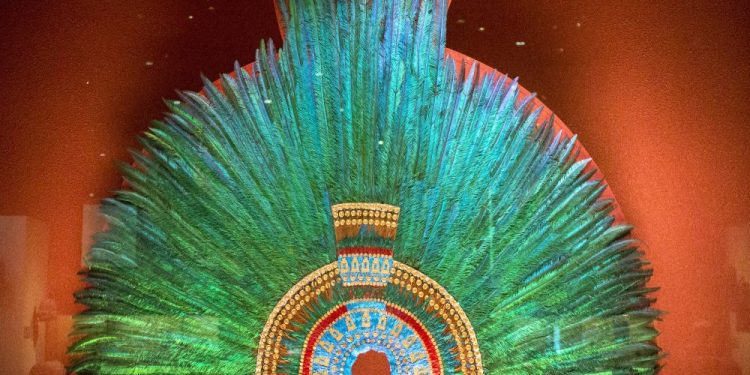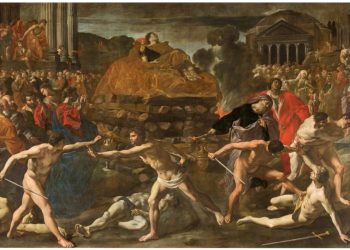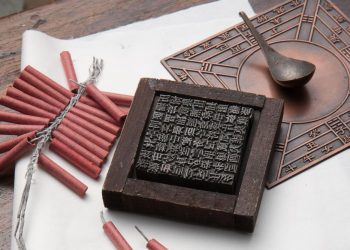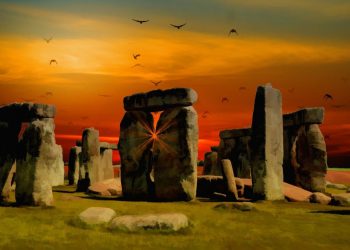Archaeology is a tool used by mankind to peer into the past. It helps write history, and from time to time, it rewrites it. One of the most fascinating places on Earth—considered a treasure trove of history—is undoubtedly present-day Mexico. Home to countless advanced civilizations such as the Olmec, Maya, and Aztecs, studying the past of this North American country has resulted in countless treasures that are thousands of years old.
Here are seven fascinating ancient Mexica (Aztec) artifacts you probably didn’t know existed.
Moctezuma’s headdress
(The featured image shows the headdress).
Moctezuma’s plume or headdress is a featherwork crown that belonged to the famous Aztec ruler Moctezuma II, the man who met Hernan Cortes as the Spanish ventured into Tenochtitlan, the capital of the Aztecs. The headdress is made of quetzal and other feathers with sewn-on gold detailing. The current headdress is exhibited in the Museum of Ethnology in Vienna. Given that it is in a very deteriorated state, it is unlikely to be returned to Mexico, which has already asked for it to be returned.
Tezcatlipoca Aztec Mask

A representative figure produced in turquoise from the 15th century is exhibited in the British Museum in London. In the pre-Hispanic culture, Tezcatlipoca is the lord of heaven and earth, the source of life, guardianship, and protection of man, the origin of power and happiness, owner of battles. He was a central deity in the ancient Aztec religion, and his main festival was the Toxcatl ceremony celebrated in the month of May.
Quetzalcoatl’s mask

This is one of the more interesting objects (personally) as the mask represents Quetzalcoatl, the most important deity of the ancient Aztecs—known to the Maya as Kukulkan. The mask was produced in the 15th or 16th century. It is inlaid with turquoise and obsidian. It measures 17.3 by 16.7 cm and is currently displayed in the British Museum. The mask was created by two intertwined and looped serpents that were depicted by contrasting colors of a turquoise mosaic, one in blue, the other in green.
Sacrificial Aztec Knife
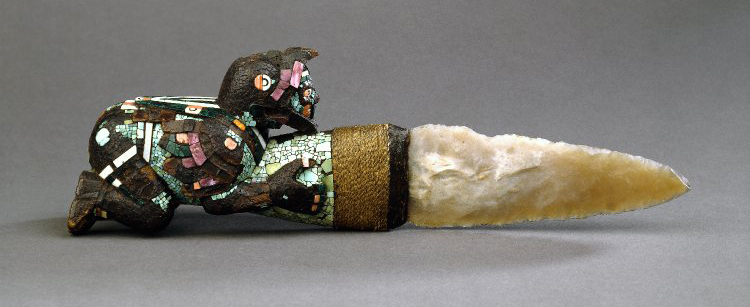
This is considered an ancient Mexica (Aztec) sacrificial knife from the 15th or 16th century. The object’s handle is saved from a single piece of wood and is shaped like a crouching man wearing the headdress of a typical Aztec Eagle warrior.
The double-headed Aztec serpent
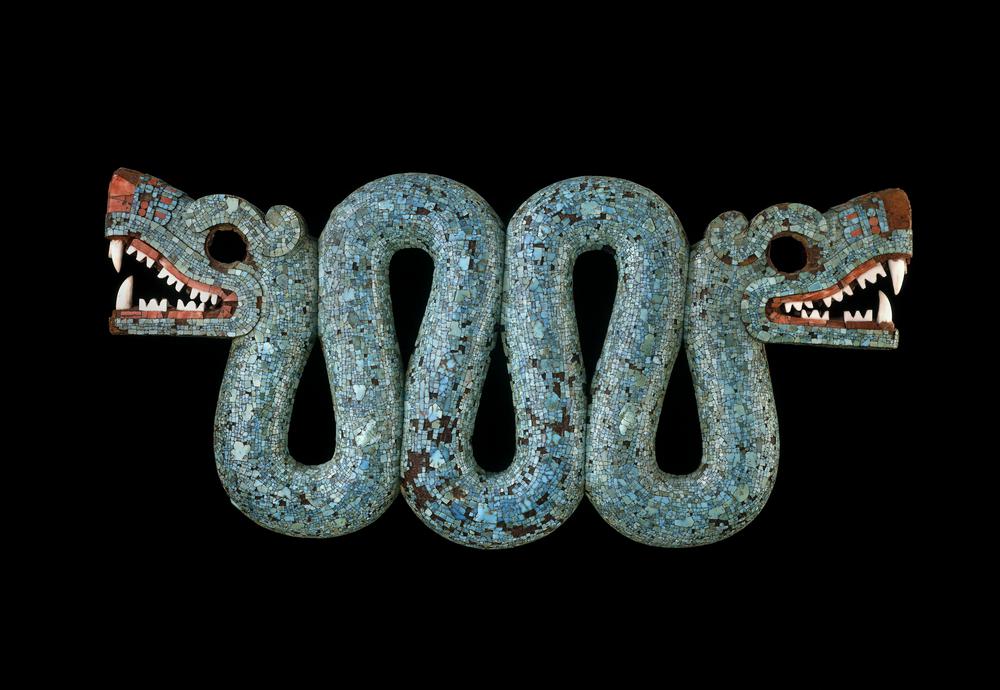
This striking double-headed serpent was likely a ceremonial object worn by Aztec priests during sacrifices or other religious occasions. It is carved in wood and covered in a beautiful turquoise mosaic. The serpent played an essential role in Aztec mythology and religion. The Aztecs spoke Nahuatl, and their world for the serpent was coatl. This is associated with many serpent deities such as Quetzalcoatl—the feathered serpent; Xiuhcoatl—the fire serpent; and Mixcoatl—the cloud serpent.
The stone figurine of Chalchiuhtlicue
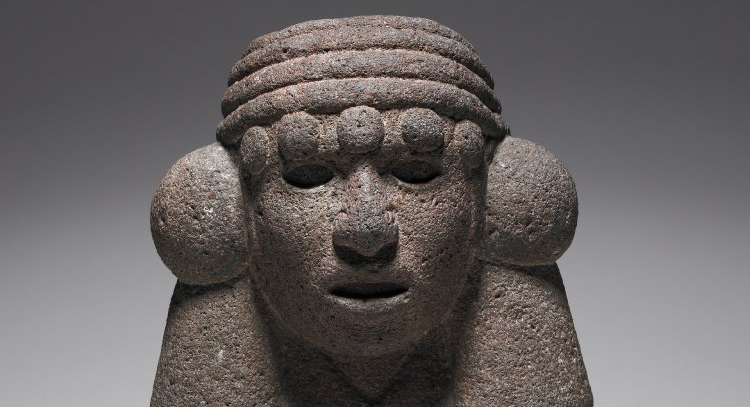
Another important ancient Mexica artifact is located in the British Museum, the stone sculpture of Chalchiuhtlicue, the water goddess of ancient Mexica mythology. This artifact is important since Chalchiuhtlicue was associated with the rivers, lakes, and spring water, and she was also the goddess of birth. Meica’s creation myth tells that there were four worlds before this one, and Chalchiuhtlicue ruled over the fourth one.
The Coatlicue sculpture
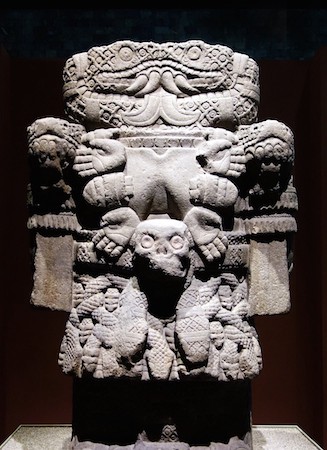
This is, without a doubt, one of the most important Meica artifacts. The Coatlicue sculpture in Mexico City’s National Museum of Anthropology stands over ten feet tall. It is believed to date back to the 15th century and was carved out of basalt, measuring 2.57 meters in height. The towering sculpture again reaffirms the worship of the coatl in the Mexica religion as several snakes are carved on its surface.
Have something to add? Visit Curiosmos on Facebook. Join the discussion in our mobile Telegram group.



